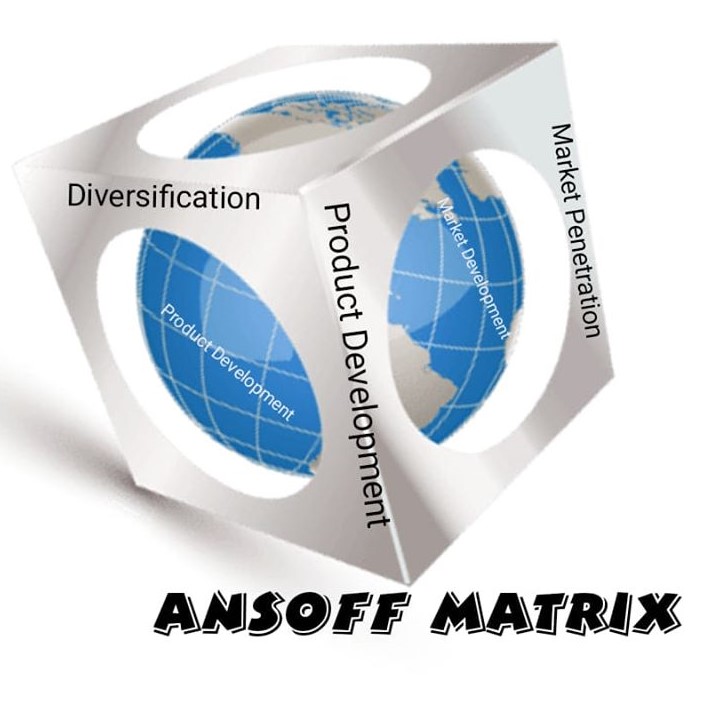The Coca-Cola Company is the manufacturer of a variety of non-alcoholic beverages. The flagship product of the company is Coca-Cola and was the first product the company launched. It was invented in 1886 by a pharmacist John Stith Pemberton. The Coca-Cola Company was launched in 1892 in Atlanta, Georgia (WII, 2019). The current headquarters are also in Atlanta, Georgia. Soon after, the company spread rapidly across the United States with the help of its flagship product through marketing and promotions. Over the years, the company also acquired various other brands to increase its market share. The company also expanded into various international markets and launched various other products under the brand name. In 2018, the company earned revenue of $31.85 billion and had more than 62,600 employees (US SECP, 2019). The company produces syrup concentrate which is then sold to various companies holding bottling rights of Coca-Cola products.
Following are the four dimensions of the Ansoff Matrix for Coca-Cola:
Market Penetration
Promoting existing products in existing markets is termed as market penetration. One of the strategies Coca-Cola uses to penetrate markets is associating the drinks with various cultural and other events. One example is of associating Coca-Cola with Christmas as both have red color in common. The same goes for associating Coca-Cola with Eid. The company also reduces competition by acquiring competitors. It also offers different bottle sizes and tin cans to suit the needs of different consumers. Coca-Cola also offers different discounts and bundled pricing during various events to boost sales. The company also gets involved with various sporting and community events to advertise its products and promote brand image. Coca-Cola also offers free samples during marketing events to help customers get acquainted with its products (Oakley, 2015). Also, the company aggressively advertises its products using various promotional mediums. All of these measures help increase the exposure of Coca-Cola products in its existing markets.
Market Development
Entering new markets with existing products is termed as market development. Coca-Cola already operates in 200 nations (US SECP, 2019). However, there are certain territories and regions in these nations that the company does not operate in. It can geographically expand into these markets with the help of the various products of the company. It also offers various packaging sizes to suit the new markets to gain acceptance. The company also takes on celebrities and sports figures during launching in new markets as a part of promoting brand image and building up customer loyalty. It also prints the images of these individuals on its products to promote itself. It also associates itself with various events and concepts such as music, festivals, and other cultural events. The prices are also lowered during launch to attract consumers.
Product Development
Coca-Cola carries out product development by promoting new products in existing markets. Coca-Cola regularly launches new drinks and variants of its existing products as a part of its product development strategy. These include variants such as Diet Cola, Cola Zero, Fanta in various fruity flavors, zero and diet variants of Sprite, and so on. In each case, the new product differs in taste, labeling, and is targeted at a new segment of the market. It also limits certain products to certain geographic regions based on consumer demand. Not all new products are launched across the market. For example, the numbers of Fanta variants offered in Pakistan are much less than those offered in the US or even in India. The new products are usually launched at lower prices to gain acceptance. However, Coca-Cola has retained the iconic flagship product and bottle as it is even after a century.
Diversification
Coca-Cola has diversified through new products in new markets numerous times. Vitamin water is an example of Coca-Cola expanding to the energy drinks domain. Aquafina mineral water is another example of diversification into related industries. Unrelated diversification is in terms of selling Coca-Cola merchandise such as clothes and fridges. The horizontal diversification allows the company to expand into various beverage industries outside of the carbonated drinks. The company also has plans in place to launch itself into various other industries as well to gain greater sales and promote its brand name. The company can easily make use of its strong brand name to diversify its business in related and unrelated domains.
References
Oakley, T., 2015. COCA-COLA: ANSOFF MATRIX. [Online] Available at: https://themarketingagenda.com/2015/03/28/coca-cola-ansoff-matrix/ [Accessed 25 Dec. 2019].
US SECP, 2019. FORM 10-K. [Online] Available at: http://d18rn0p25nwr6d.cloudfront.net/CIK-0000021344/4705d271-8719-4b57-94e0-332e22765317.pdf [Accessed 25 Dec. 2019].
WII, 2019. Who Invented Coca Cola? [Online] Available at: https://www.whoinventedit.net/who-invented-coca-cola.html [Accessed 25 Dec. 2019].
